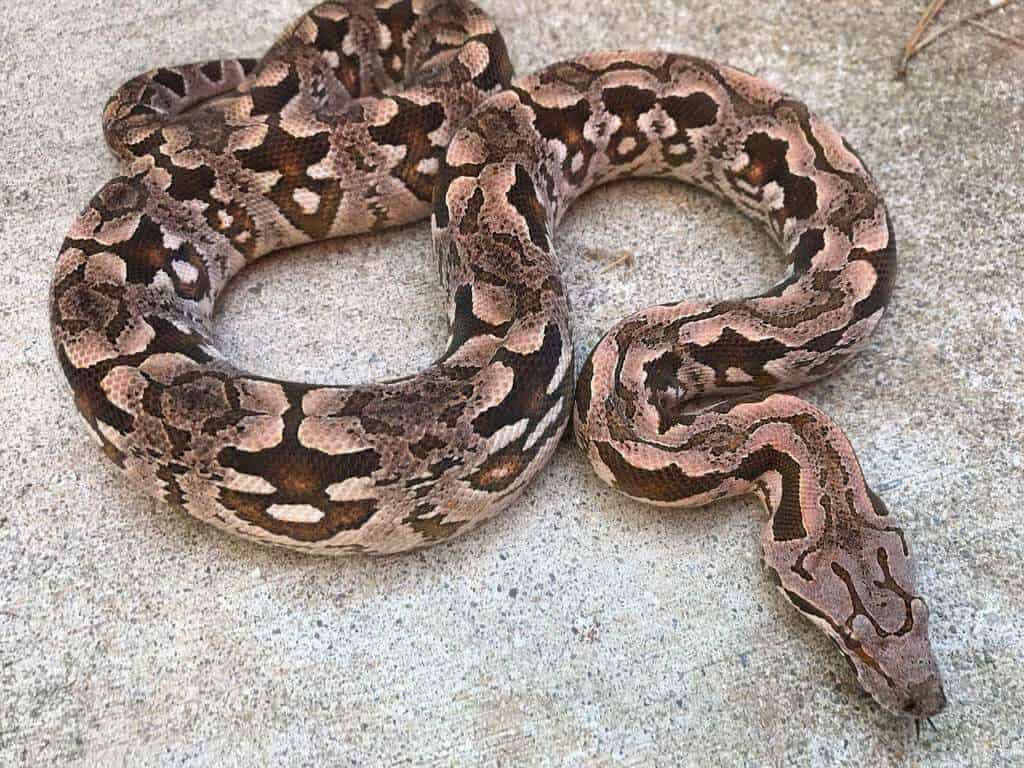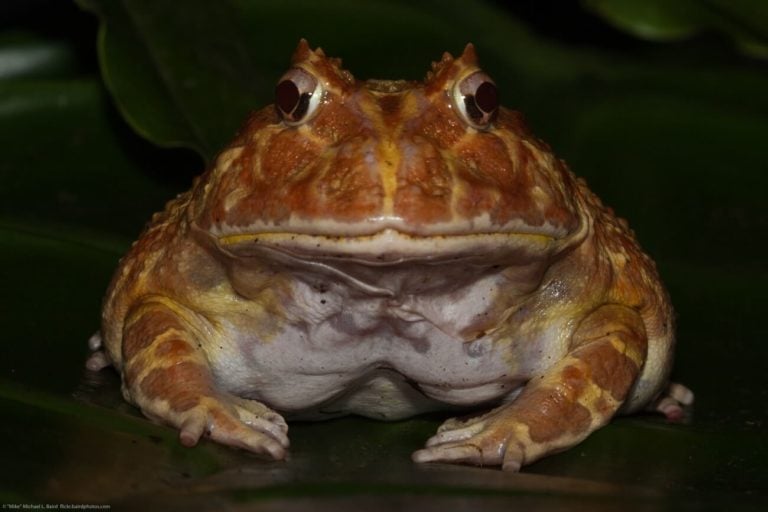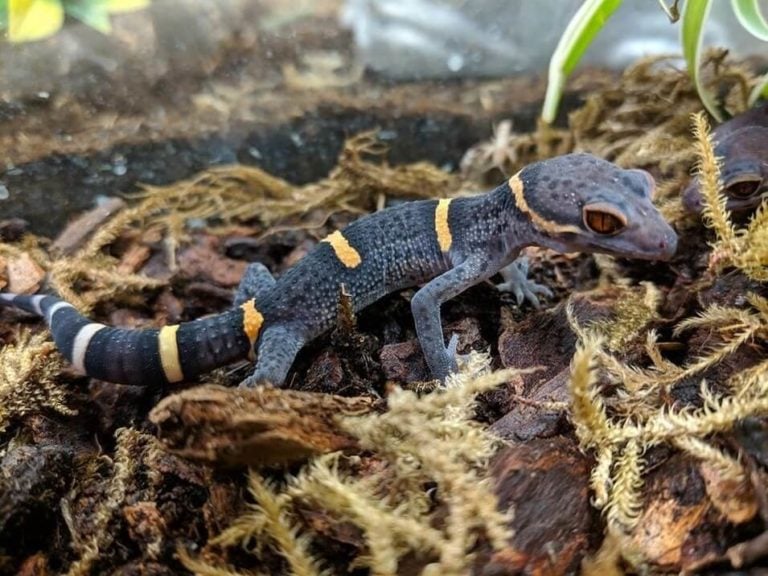Dumeril’s boas are an exciting and rewarding pet snake to own. With their interesting look and unique requirements, there’s a lot to like about caring for them!
But if you’re considering this species, you should have a strong understanding of their care requirements first.
This guide will teach you the fundamentals of Dumeril’s boa care. We cover size, temperament, lifespan, diet, habitat setup, and more!
Table of Contents
Species Summary
The Dumeril’s boa (Acrantophis dumerili) is a lovely, even-tempered boa that makes a nice pet for slightly more experienced snake owners. This medium sized, rather chunky boa constrictor is a real beauty with colors ranging from browns and peaches to greens and reds.
In the wild, this snake can be found in the southern, more arid regions of Madagascar. Not being a climber, the Dumeril’s boa lives mostly on the ground where it blends in perfectly with its surroundings.
Average Dumeril’s Boa Size
The average Dumeril’s boa size ranges from three to six feet when fully grown. There are Dumeril’s boas that can grow as long as nine feet, but this is definitely not the norm.
If you are looking for what’s considered to be a medium sized boa, the Dumeril’s boa fits this description exactly. This boa is a great choice for most typical snake setups.
Expert Tip: Female Dumeril’s are larger and heavier than males (this is common for most boa species). This is because they need the extra girth to be able to incubate and deliver between 6-28 live babies that tend to be around 12-18 inches long!
Lifespan
The average lifespan of a Dumeril’s boa is around 15 years. With excellent care (and some good genetics) it’s possible for this snake to even reach the 20 year mark!
In terms of growth rate, the Dumeril’s boa is considered to be a slow grower. This is because it can take from three to five years for this boa to reach complete maturity.
Appearance And Colors
If you’re looking for a boa with a distinctive appearance, the Dumeril’s boa is one to consider. This stunning boa has a rather thickset body that is quite popular with pet snake aficionados.
However, it’s the coloring of this gorgeous boa that really sets it apart.

Greens, reds, browns, grays and even peachy tones combine to glorious perfection to create the unique look of the Dumeril’s boa. This is a snake that can be deceptively colorful in the right kind of light!
A lot of owners comment on the aggressive shape of the head. It widens quite a bit at the jaw before quickly narrowing out toward the front of the mouth. Many times their head has a slightly darker base color than the rest of their body as well (which draws more attention to it).
Dumeril’s Boa Care
On paper, Dumeril’s boa care is not particularly difficult. However, many consider this pet snake to be better suited for someone with some previous experience handling boas.
This is mainly because there are some very specific requirements when it comes to owning and caring for these reptiles. While slightly less experienced owners have managed to keep these snakes, the success rate is far higher when the owners have a little expertise.
The nice thing is that there’s no real finicky or out-of-the-ordinary equipment needed. Simply use the correct size of enclosure, provide a sufficient habitat, feed it on a strict schedule, and give it plenty of patience and love!
Enclosure Size And Dimensions
The recommended size of a Dumeril’s boa enclosure is around four feet long, two feet deep and 14 inches tall. These enclosures can be made of plastic, glass or even wood.
For neonates, five to ten gallon reptile terrariums are usually sufficient. As your Dumeril’s boa grows, it will need an enclosure that grows with it. When your neonate becomes a juvenile, you should transfer it to an enclosure of about two feet long, two feet deep and 14 inches tall. This will work for juveniles up to three feet in length.
Expert Tip: When it comes to boa enclosures, the capacity matters quite a bit (especially for adults). To make your pet the happiest it can be, it’s important to get the size and dimensions of their home just right.
Habitat Setup
As far as pet snakes go, the Dumeril’s boa has fairly simple requirements when it comes to their habitat setup.
Your boa will need you to create a nice humid environment, and that can be accomplished with just the right snake substrate.
The best substrates to use in your tank include paper-based items such as paper towels, brown butcher paper or newspaper. However, newspaper actually seems to work the best with this species.
Some people also use substrates like cypress mulch or Aspen shavings, but if you decide to add a mulch to your tank, make sure to never use cedar or pine shavings. These shavings can cause potentially serious side effects like neurological problems and skin damage.
Of course, you’ll need more than a good substrate to keep your pet happy.
Dumeril’s boas need to have a place to hide. Pieces of logs, cork bark or special hide boxes are all excellent options.
Temperature And Lighting
Just like all other reptiles, it’s necessary to have a way to regulate the temperature and lighting in their enclosure.
In terms of lighting, Dumeril’s boas don’t really have any special requirements. Daytime heat lights or a fluorescent bulb should be sufficient in most cases.
Expert Tip: Just make sure to create a 12 hour daylight, 12 hour darkness cycle in your enclosure.
The temperature in the cool side of their enclosure should be roughly 80°F. On the basking/warm side of the habitat you should aim for 85°F.
Humidity
Like many boa constrictors, Dumeril’s boas thrive in an environment where the level of humidity is kept between 40 and 60 percent.
It’s very important to take humidity seriously because your snake could end up with respiratory issues at levels over 60 percent. Also, it’s thought that they could face shedding difficulties at levels that go below 40 percent.
Luckily, you can create an optimal humidity level quite easily. Misting the snake’s enclosure with room temperature water is an excellent way to increase the level of humidity when necessary. Depending on the substrate you use, you may need to mist several times a day.
Placing a bowl of water in the enclosure in tandem with an under-the-tank heat source can boost humidity levels as well.
Expert Tip: Invest in a high-quality hygrometer so you can easily monitor the humidity level and keep your pet comfortable!
Water
Your Dumeril’s boa will need a consistent supply of clean water. Boas actually drink quite a lot, so you’ll need to give them clean water (spring water or filtered water are both fine).
Make sure that their bowl is fairly large because they will often slither into it in order to soak before they begin the shedding process. Also, you’ll want the bowl to be heavy enough to not be easily tipped over.
Change the water in the bowl often to reduce the risk of your snake getting sick. Once a day is good, but if you see that their water is dirty it’s always smart to change it regardless of your schedule.
Food And Diet
An optimal diet is important for the long term health of your Dumeril’s boa. Rodents, rabbits and fowl are common favorites for this species, and you can even give them frozen versions if necessary.
However, most boas prefer to eat live prey. No matter which route you decide to take, there are some very specific details to be aware of when it comes to this process.
- First, you should never handle your snake for 24 hours after it has eaten.
- Second, it’s a good idea to use a hook to take your boa out of the tank before you put in the food. This way you won’t be accidentally bitten due to the snake’s natural bite response.
- Third, make sure that the girth of the prey is never more than the girth of the snake.
Snakes from neonates to two years old can be given one rodent per week. Older boas can be fed every two weeks as long as the meal is large enough to keep them satisfied until the next feeding.
Don’t overfeed your boa, or it may become obese and prone to health issues. Stick to the guidelines above to keep them healthy.
Potential Health Issues
Even with the best of care, your boa can develop a wide range of health issues. With careful observation, you’ll be able to spot potential health problems before they get out of hand.
Mites can be a real problem for these snakes (something beginners often overlook). Some signs of an issue with mites include excessive soaking, a lack of appetite, lethargy and constant rubbing.
Believe it or not, obesity is another common health issue. Like with humans, obesity in your boa can lead to heart disease and liver problems. Extra fat rolls and a segmented body are signs that you will need to make changes to your boa’s diet.
If you have an environment that’s a little too humid, your Dumeril’s boa may develop respiratory problems. So if you notice lethargy and weight loss combined with bubbling mucus, it’s probably respiratory in nature.
Expert Tip: These are just a few of the most common health issues, but a regular visit to your vet can help keep problems in check. Also, keeping your boa’s environment scrupulously clean and sanitizing the whole set up monthly will go a long way towards keeping your pet healthy and happy.
Behavior And Temperament
Your Dumeril’s boa, while not exactly soft and cuddly, can make a sweet and docile pet. This boa is well known among enthusiasts for its calm disposition and genial temperament.
That being said, you’ll need to handle your pet snake with caution and care due to the unlikely (but unpleasant) possibility that they may bite.
Just like people, Dumeril’s boas have their own personalities and may be shy, friendly or even aggressive. With proper handling, patience and time, there is a good chance that your boa will get used to you.
Try to pay attention to what your pet likes and doesn’t like, and be respectful. Over-handling your boa can lead to a myriad of health issues, and it may cause your snake to bite.
Handling Tips
We know that you are going to want to have a long, healthy and happy relationship with your pet.
A big part of relating to your snake in a way that makes them comfortable is to handle them properly. Correct handling will ensure that your snake feels safe, and it will help to keep your snake from biting.
One common handling method involves what’s called “hook training.”
Hook training is basically a way to get your Dumeril’s boa used to being handled. It will also train your boa to know when it’s feeding time. After lots of time and patience, your boa will respond calmly to being gently touched with the hook. You’ll then be able to safely pick it up.
Another thing to remember about handling your snake is that many Dumeril’s boas do not like being touched on the head. Also, always carefully support your snake’s body while it’s being held. Care and patience will help to ensure that your relationship with your Dumeril’s boa is a happy one.
Conclusion
We hope this Dumeril’s boa care sheet has helped you feel more prepared about potentially owning this species. These snakes are a pleasure to own, and quite rewarding too.
If there’s anything we didn’t cover that you need help with, don’t hesitate to ask. We’re always eager to help out our readers!


